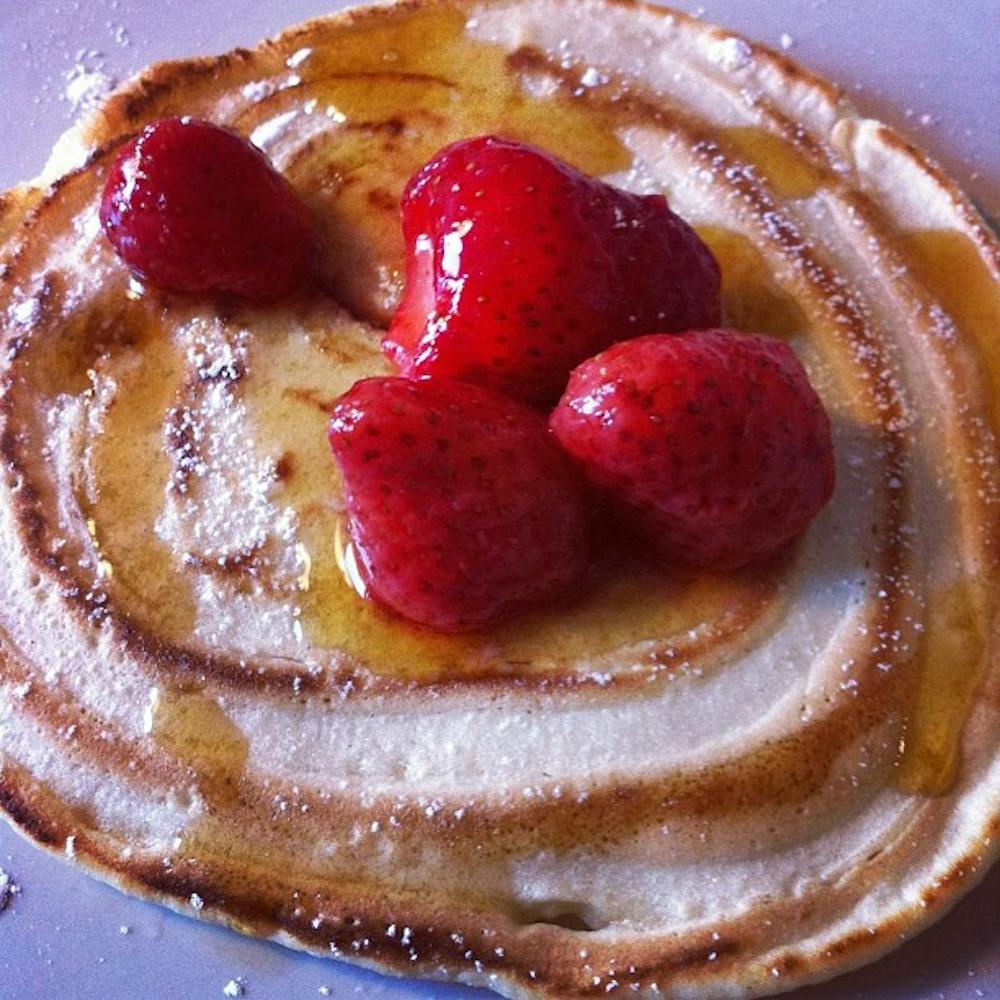Growing up in a household led by a Swedish father on one side and a Jewish mother on the other, both sets of cultural practices weaved their way into my upbringing through holiday celebrations, summer travel, spoken language. Reflecting on my childhood requires acknowledging these distinct influences. Here I’d like to highlight one specific manifestation: food.
For my brothers and I, being raised Swedish American meant eating pancakes and pea soup for dinner on Thursdays. While this duo seems random, its history dates back to the 15th century. Cheap and easy to make in large batches, Catholic Swedish kitchens served them together as a hearty meal on Thursdays leading up to the Friday fast. Despite Sweden transitioning to Lutheranism and eventually secularism, this tradition persists in Sweden today, with many restaurants offering the sweet-and-savory combination as a Thursday specialty.
Pancake Thursdays easily worked their way into the weekly dinner rotation, though we often passed on the pea soup — my brothers and I were picky eaters. While Swedish cuisine, mostly fish and potatoes, tends not to be much to brag about, my childhood friends expressed jealousy over this Andersson household staple. Below, you will find the simple recipe that most strongly reminds me of my Swedish-inspired upbringing. Pair these Swedish pannkakor with raspberry jam and whipped cream for a weeknight comfort meal, pea soup optional.
Ingredients:
- 3 eggs
- 1 ¼ cups of whole milk
- ¾ cup of all-purpose flour
- 1 tablespoon of white sugar
- ½ teaspoon of salt
- 1 tablespoon of butter, or as needed
Instructions:
- Beat eggs in a bowl with an electric mixer until thick and lemon colored, between three to five minutes. Stir in the milk.
- Sift flour, sugar and salt into a separate bowl. Add the dry ingredients to the egg mixture and mix until the batter is smooth.
- Grease a griddle with butter and heat over medium heat. Drop tablespoons of batter on the griddle, spreading the batter to form thin pancakes (more similar to crepes than American pancakes). Cook until light brown on the bottom, one to two minutes. Flip and continue cooking until the second side is light brown, one to two minutes more. Repeat with remaining batter.
Complementing that Swedish influence from my father, specific dishes likewise accompanied my maternal, Jewish roots. Recent years have witnessed the dispersal of family — my brother to Denver, my cousin to Los Angeles — so holiday Seder attendance has become increasingly sparse. I look back on the Passover Seders of my childhood with warmth, nostalgic for those instances of complete family gathering. Reflecting on these Seders brings me back to the kid’s table, squished between my cousins with a big helping of my maternal grandmother’s matzo brei — fried matzo — on my plate.
Ingredients:
- 2 sheets matzo
- 2 – 3 tablespoons of unsalted butter
- 4 large eggs, beaten with 1 tablespoon of water
- Large pinch of fine sea salt, more to taste
- Large pinch of black pepper
- Chopped chives, for serving
Instructions:
- Under cool running water, rinse matzo sheets until they are quite wet. Set aside and let sit to soften while you prepare the pan.
- Place a large, preferably nonstick skillet over medium-high heat and add butter. Once it melts and the foam subsides, break matzo sheets into bitesize pieces and add to the pan. Sauté matzo in butter until it browns all over, about two minutes.
- Add eggs, salt and paper to the pan and scramble the mixture until it is just set but still light and fluffy, about one minute.
- Serve matzo brei sprinkled with salt and topped with chives for a savory side dish.
While the transition to adulthood begets hardship, I find consolation in the fixedness of these family recipes, which continue to evoke dear memories of my childhood even when I feel disconnected from it. Despite celebrating Passover on campus this semester, I nonetheless reminisce on the dishes that characterized my earliest Seders. Visits to Sweden continue to entail a request for pannkakor from my paternal grandmother, who eagerly grants that wish every year.
I invite you to take a moment to think about those recipes that defined your childhood. Try one of these recipes or one of your own for a reminder that childhood remains with us, no matter where we find ourselves.





